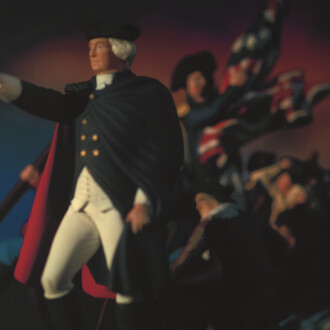The Museo Reina Sofía presents a major exhibition dedicated to Salvador Dalí, one of the most comprehensive shows yet held on the artist from Ampurdán. Gathered together on this unique occasion will be some 200 works from leading institutions, private collections, and the three principal repositories of Salvador Dalí’s work, the Fundació Gala-Salvador Dalí (Figueres), the Salvador Dalí Museum of St. Petersburg (Florida), and the Museo Reina Sofía (Madrid), which in this way are joining forces to show the public the best of their collections.
The exhibition aims to revalue Dalí as a thinker, writer and creator of a peculiar vision of the world. One exceptional feature is the presence of loans from leading institutions like the MoMA (New York), which is sending the significant work The Persistence of Memory (1931); the Philadelphia Museum of Art, which is lending Soft Construction with Boiled Beans (Premonition of Civil War) (1936); the Tate Modern, whose contribution is Metamorphosis of Narcissus (1937); and the Musées Royaux des Beaux-Arts, Belgium, the lender of The Temptation of St Anthony (1946).
The surrealist period will constitute the nucleus of the show at the Museo Reina Sofía, with special emphasis on the paranoiac-critical method developed by the artist as a mechanism for the transformation and subversion of reality. Besides paintings and drawings, the various sections will also contain documentary material, photographs, Dalí’s own manuscripts, magazines and films of enormous importance for an understanding of the artist’s complex universe.
The exhibition will open with a section devoted to Dalí’s earliest works. Predominant here are the elements that marked his childhood, such as his family – Portrait of my Father (1925) or Girl at the Window (1925) – and his natural surroundings during those years, as in Cliffs (1926) and Landscape of Cadaqués (1923).
His arrival in late 1922 at the Residencia de Estudiantes in Madrid, where he met, among others, Federico García Lorca and Luis Buñuel (with whom he collaborated on the film Un chien andalou), brought him face to face with the ‘Generation of ’27’, a group formed by poets, writers, painters and film-makers. Dalí was at that point increasingly influenced by the avant-gardes, and he flirted with different ‘-isms’ like cubism, fauvism and futurism. The collective imaginary developed at the Residencia is reflected in the numerous drawings of Putrefactos, a series of the mid-1920s. Among the other important works to be seen in this part of the show are the emblematic Portrait of Buñuel (1924) and the significant Neo-Cubist Academy (1926).
The section devoted to self-portraits brings us closer to Dalí’s vision of himself and the persona he constructed at various moments of his life. The exhibits range from his Selfportrait with Raphaelesque Neck (1921) and his Cubist Self-portrait (1923) to the film he made with Jean-Christophe Averty, Autoportrait mou de Salvador Dalí (1966).
In what might be described as his ‘pre-surrealist’ phase, when he is seen to have come under the influences of Masson, Bataille, Miró and Picasso, Dalí produced works like The Rotting Donkey (1928) and Inaugural Gooseflesh (1928). It was during his surrealist period itself that Dalí developed his paranoiac-critical method, the focus of attention in the next section of the exhibition, with such great works as The Great Masturbator (1929), The Persistence of Memory (1931), William Tell (1930) and The Specter of Sex Appeal (1934). The paranoiac-critical method allowed him to transform and subvert the world. Dalí confronted the movement’s passive automatism (automatic drawing, the cadavres exquis…) with a proposal for an active method based on the delirium of paranoiac interpretation.
Specific sections are next dedicated to the artist’s re-reading of Millet’s Angelus; to surrealism after 1936, with a number of surrealist objects on display such as the wellknown White Aphrodisiac Telephone (1936) and Veston aphrodisiaque (1936/77); and the theme of war, with such disturbing oil paintings as Premonition of Civil War (1936) and The Face of War (1940).
The itinerary continues with thirty of the original drawings used in the 1940s to illustrate the book The Secret Life of Salvador Dalí. It then goes on to look at the work related to his experience in the United States, through which he revalued the theatricality of his art (The Temptation of St Anthony, 1946). This was the moment of his experimental film projects and collaborations with Hitchcock (Spellbound) and Walt Disney (Destino). The Second World War and the nuclear catastrophe of Hiroshima and Nagasaki profoundly transformed his work. This was the start of his mystical-nuclear period, represented by works like Raphaelesque Head Exploding (1951) and The Maximum Speed of Raphael’s Madonna (1954). From the 1960s until his final work, science and new technologies led him to explore future languages. Examples are experiments like the stereoscopic work Dalí Seen from the Back Painting Gala from the Back Eternalized by Six Virtual Corneas Provisionally Reflected in Six Real Mirrors (1972- 73), or his last work, Swallow’s Tail and Cellos (1983), based on the catastrophe theory of the mathematician René Thom. At the same time, he never relinquished the tradition of the great masters like Velázquez and Michelangelo, nor did he abandon his own world and career, showing the seduction of the inexplicable in works like In Search of the Fourth Dimension (1979).
Museo Nacional Centro de Arte Reina Sofía
Calle Santa Isabel, 52
Madrid 28012 España
Tel. (+34) 91 774 1000
info@museoreinasofia.es
www.museoreinasofia.es
Opening hours
Monday to Saturday 10.00am - 9.00pm
Sunday 10.00am - 7.00pm. (2.30 - 7.00pm Collection 1 and 2)
Tuesday closed (including holidays)











